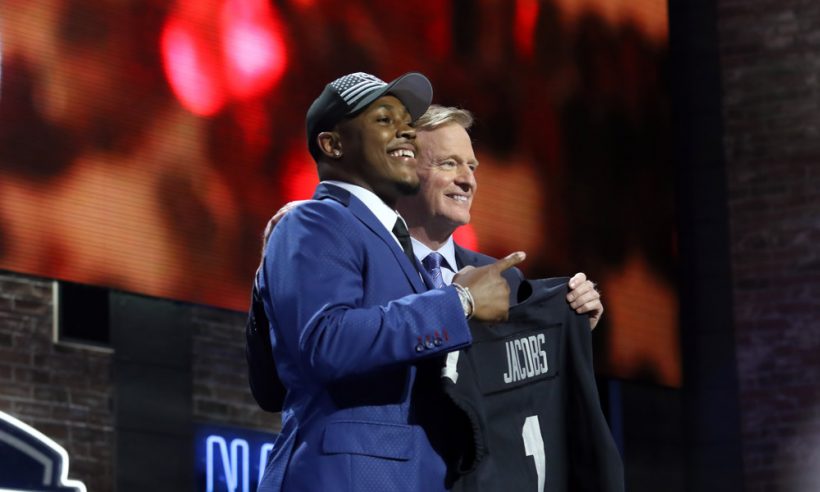Converting Average Draft Position Data into Projected Fantasy Points
Our rankings incorporate market data like a player's average draft position, but we had to convert that info into meaningful fantasy point projections to use it with our other models.
May 12, 2023 - by Jason Lisk

Just as in the real NFL Draft, the expected value for a player decreases with draft position (Photo by Michael Wade/Icon Sportswire)
At TeamRankings, we like to incorporate market data when making our predictions. That doesn’t mean that we solely rely on what others are saying. In fact, we will take plenty of stands on teams and games. But including some market wisdom helps prevent unnecessary outliers or missing some key information. In the case of fantasy football, the best “market data” is average draft position.
To incorporate the impact of average draft position (ADP) data, though, we need to convert it to fantasy points scored. That’s because our similar players and team usage models are also outputting projected fantasy points scored. It also allows us to see where differences in ADP make a significant difference. The impact of being two rounds off on a player is huge if we are talking about a first round pick versus a third round pick. It may be just a few points difference if we are talking about players at the end of a fantasy draft.
Average Draft Position versus Fantasy Points Scored
Here’s a chart showing the Average Draft Position (ADP) on the x-axis, and average PPR (Point-Per-Reception) fantasy points scored on the y-axis. Players were grouped into bins based on ADP, for the the years 2017-2021. Quarterbacks are in blue, running backs in orange, wide receivers in gray, and and tight ends are in yellow.
What The Data Shows
Wide Receivers score more than Running Backs taken at the same draft position in PPR drafts, on average. But the rate of fantasy points decline looks very similar for the two positions. Both show a large drop in the expected PPR points over the first 50 picks, but a small difference in expected fantasy points after pick 50.
The tight ends have a smaller sample size. A small handful of elite ones are drafted in the top 50 picks. There has been a big drop-off in average performance from the elite candidates and everyone else in recent years. Outside the top 50 picks, though, you don’t see much difference in performance. In fact, some of the biggest recent booms at the tight end position have come after pick 140.
How We Used The Data
Of course, we didn’t just take a player’s ADP, look up the past fantasy point average for the relevant bin, and then use that as a player’s projection.
We smoothed out the data above to create a nice curve mapping ADP to a point projection. For example, you can see that the players taking earliest at both RB and WR have actually scored worse than the players drafted just behind them. But this is largely a function of small sample sizes. So this next chart took the points per game (rather than raw points) to even out the injury risk, and also smoothed out the data by using some of the data from players in the bins on either side.
Then for each 2023 player we used that curve to get an ADP-based PPR fantasy point projection, based on their average draft position. Finally, we used that projection as one of several data points that we blended to create our final fantasy football projections.

